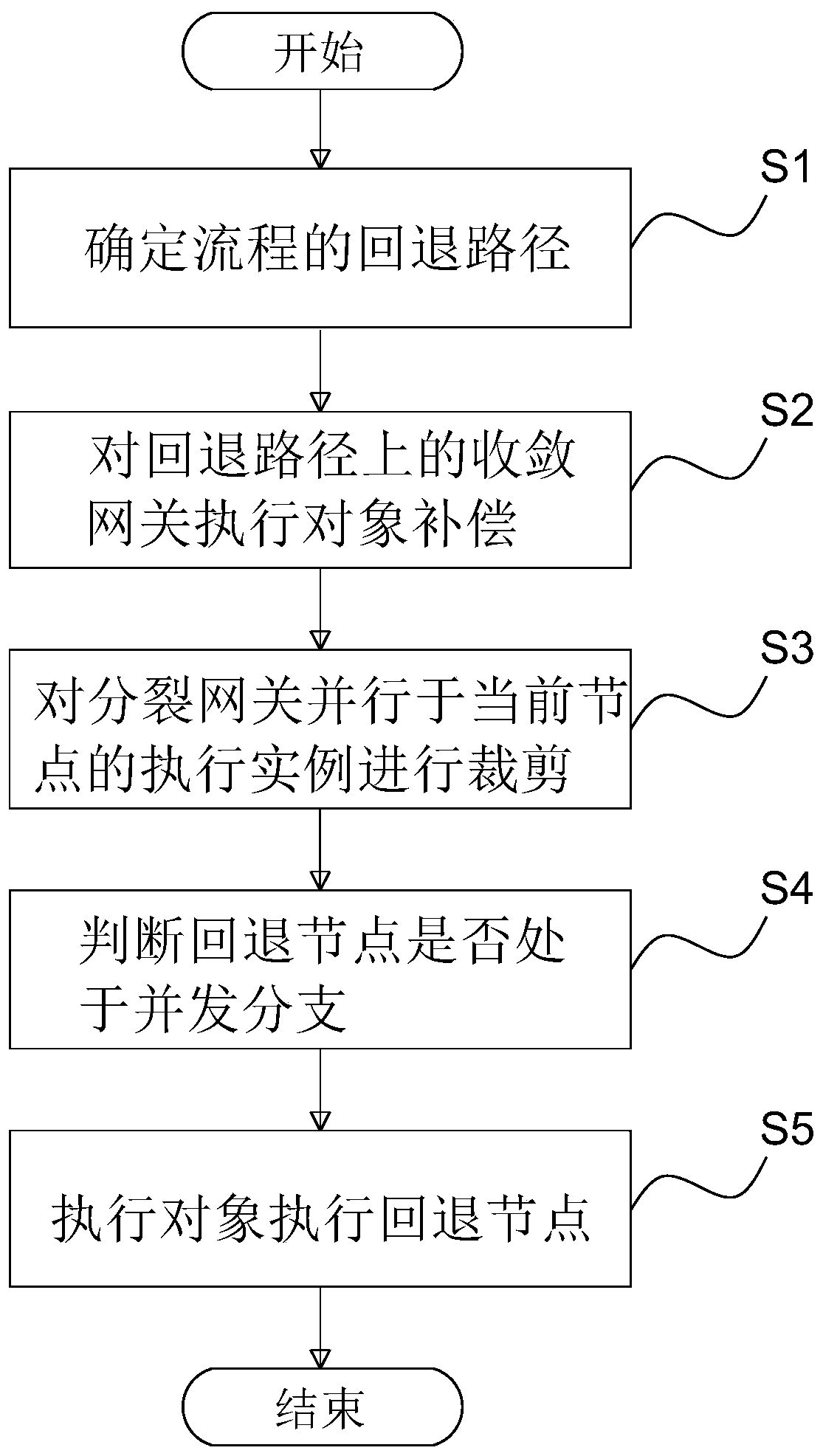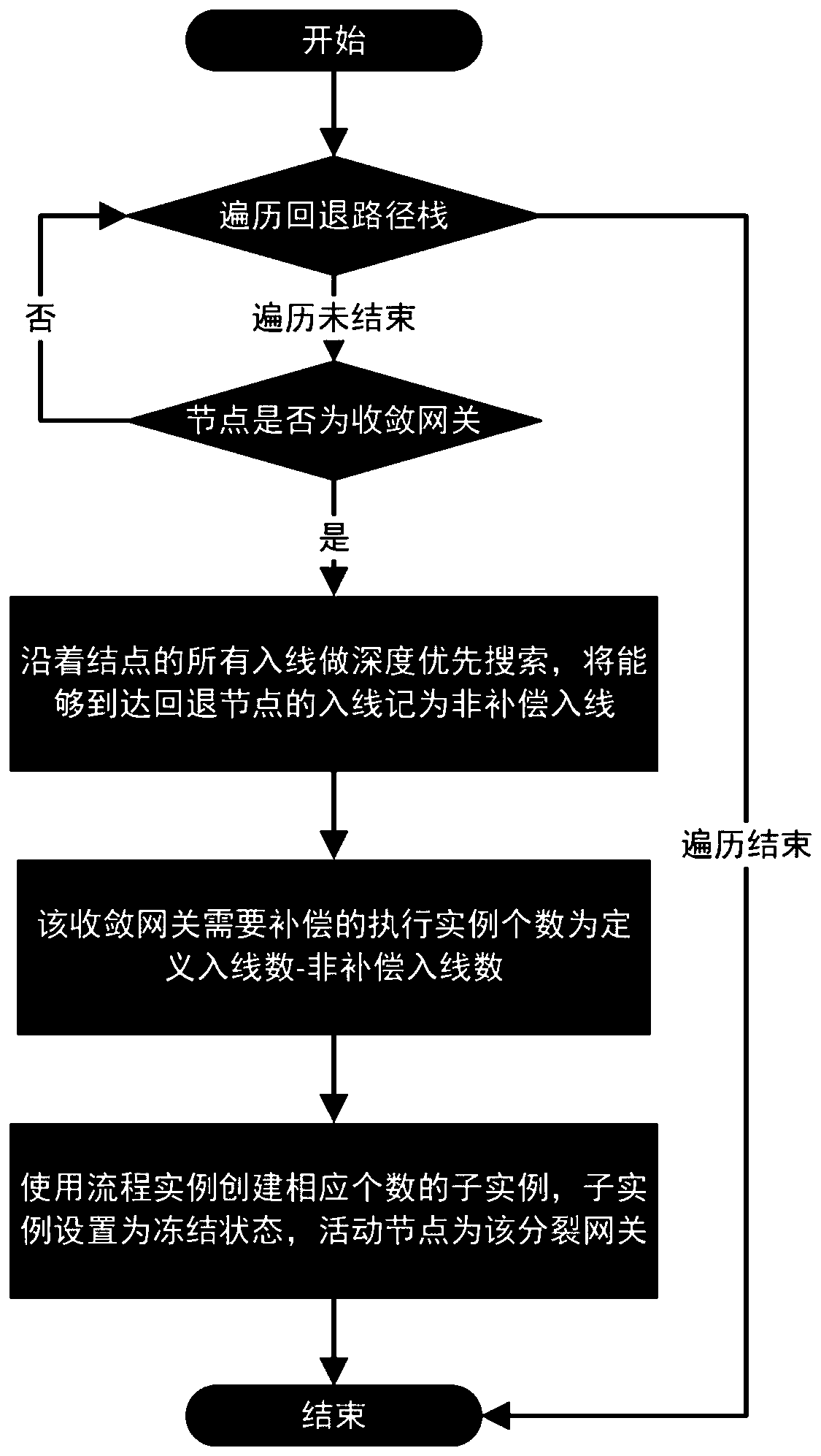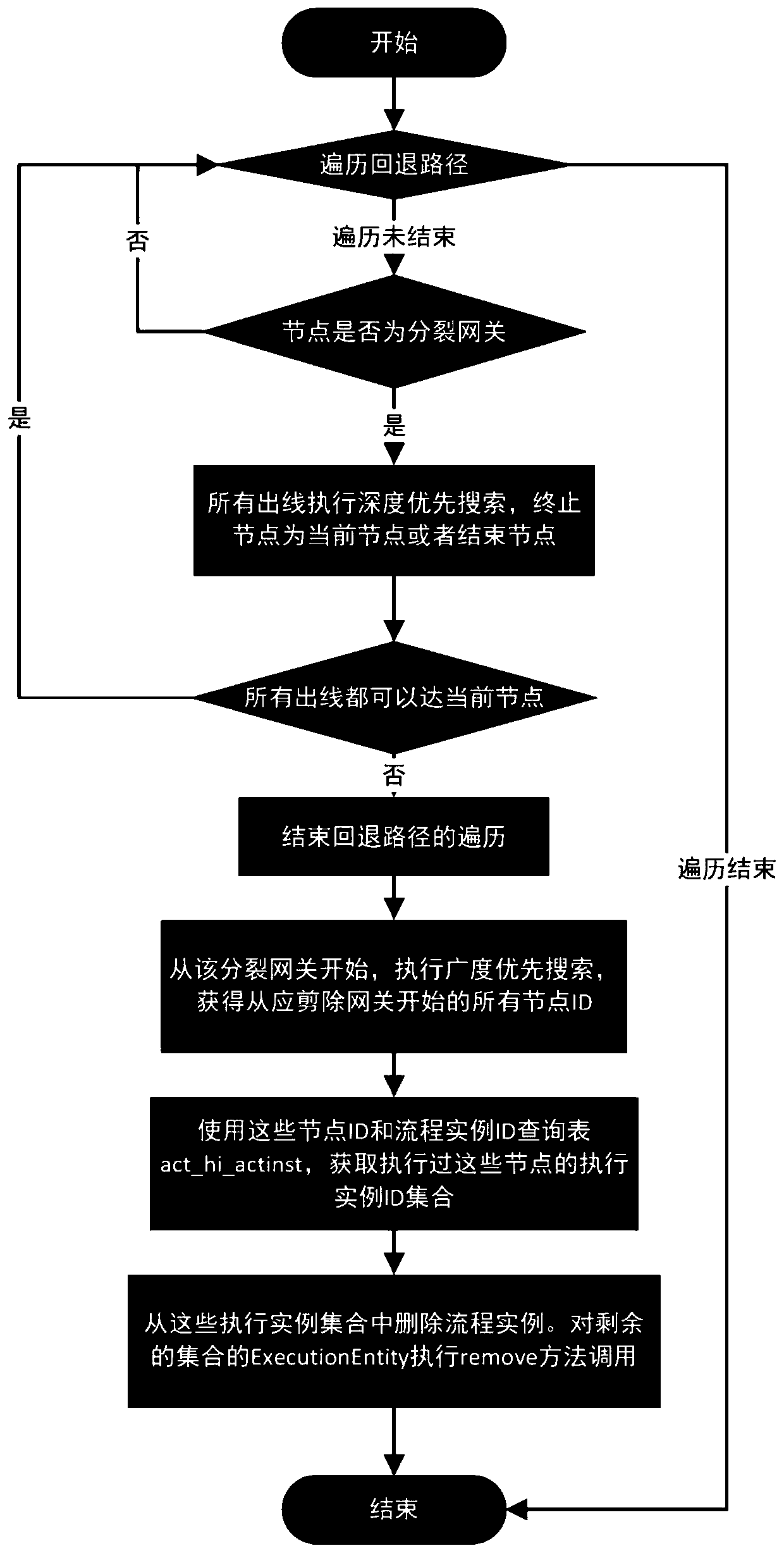Method for realizing reverse circulation based on Activiti workflow
A workflow and process technology, applied in the direction of instruments, data processing applications, resources, etc., can solve the problems of not supporting the reverse flow of the process, adding business processing branches, and the process cannot flow normally, and achieve the effect of simplifying business processes and drawing simple
- Summary
- Abstract
- Description
- Claims
- Application Information
AI Technical Summary
Problems solved by technology
Method used
Image
Examples
example ID
[0039] Use the above node ID and process instance ID query table act_hi_actinst to obtain the set of execution instance IDs that have executed these nodes;
[0040] Exclude the process instance from the execution instance ID collection, and execute the remove method call on the ExecutionEntity of the remaining collection.
[0041] S4. Determine whether the rollback node is in the concurrent branch;
[0042] To execute the rollback node, you first need to confirm whether the target node for rollback is in the concurrent branch. The judgment steps are as follows:
[0043] Use the process start node as the starting point and the fallback node as the target node to perform depth-first traversal to obtain the shortest path from the start node to the fallback node, and use the stack to save the traversed results;
[0044] Traverse the shortest path stack from the bottom of the stack, if the node is a split gateway, push the node into a temporary stack, if the node is a convergence ...
example 1
[0049] Example 1: Both the fallback node and the current node are on the main process (see Figure 6 ).
[0050] Step S1: Starting from node C, perform a breadth-first search with node A as the target node, and confirm that the fallback path is: C—B—A;
[0051] Step S2: Traversing the fallback path C—B—A, if no convergent gateway is encountered, this step ends;
[0052] Step S3: This step needs to obtain the pruning starting point first, because there is no split gateway in the fallback path, so there is no branch to be pruned, and this step ends;
[0053] Step S4: Judging that fallback node A is on the main process;
[0054] Step S5: Execute node A directly using the process instance.
example 2
[0055] Example 2: The target node of the fallback is on the branch path (see Figure 7 ).
[0056] Step S1: Starting from node D, perform a breadth-first search with node B as the target node, and confirm that the fallback path is: D—gw02—B;
[0057] Step S2: Traversing the fallback path D—gw02—B, encountering the convergent gateway gw02, starting from gw02, traversing along its two incoming lines seq1 and seq2, if seq1 can reach the fallback node B, record it as a non-compensated incoming line, Seq2 cannot reach the fallback node B, and it is not a non-compensated incoming line. Therefore, the number of execution instances that need to be compensated by the convergence gateway gw02 is 1. Use the process instance to create a sub-execution object and set it to the frozen state and the active node is the convergence gateway gw02.
[0058] Step S3: This step needs to obtain the pruning starting point first, because there is no split gateway in the fallback path, so there is no br...
PUM
 Login to View More
Login to View More Abstract
Description
Claims
Application Information
 Login to View More
Login to View More - R&D
- Intellectual Property
- Life Sciences
- Materials
- Tech Scout
- Unparalleled Data Quality
- Higher Quality Content
- 60% Fewer Hallucinations
Browse by: Latest US Patents, China's latest patents, Technical Efficacy Thesaurus, Application Domain, Technology Topic, Popular Technical Reports.
© 2025 PatSnap. All rights reserved.Legal|Privacy policy|Modern Slavery Act Transparency Statement|Sitemap|About US| Contact US: help@patsnap.com



